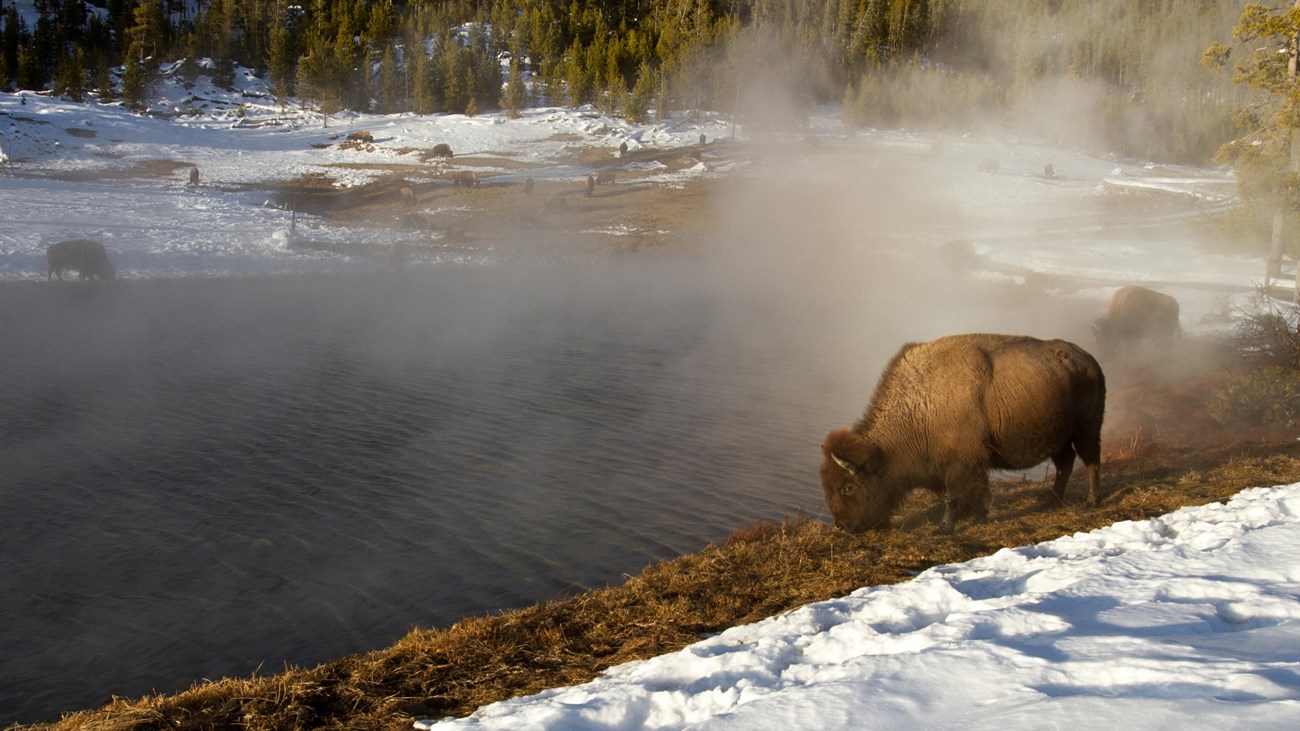
NPS/Diane Renkin Yellowstone National Park has always managed its backcountry to protect natural and cultural resources and to provide visitors with the opportunity to enjoy a pristine environment within a setting of solitude. Yet none of the park is designated as federal wilderness under the Wilderness Act of 1964. In 1972, in accordance with that law, the Secretary of the Interior recommended 2,016,181 acres of Yellowstone’s backcountry be designated as wilderness. Although Congress has not acted on this recommendation, all lands that fall within Yellowstone’s Recommended Wilderness are managed to maintain their natural wilderness character so as not to preclude wilderness designation in the future. The last Yellowstone wilderness recommendation sent to Congress was for 2,032,721 acres. Wilderness in the National Park SystemCongress specifically included the National Park Service in the Wilderness Act and directed the National Park Service to evaluate all its lands for suitability as wilderness. Lands evaluated and categorized as “designated,” “recommended,” “proposed,” “suitable,” or “study area” in the Wilderness Preservation System must be managed in such a way as to (1) not diminish their suitability as wilderness, and (2) apply the concepts of “minimum requirements” to all management decisions affecting those lands, regardless of the wilderness category. Some activities that are typically prohibited under the Wilderness Act are motorized or mechanized equipment use and the installation of structures. Director’s Order 41In 1999, Director’s Order 41 was issued to guide National Park Service efforts to meet the 1964 Wilderness Act, directing that recommended wilderness must be managed to protect wilderness resources and values. Revised in 2013, Director’s Order 41 provides clearer guidance on contemporary issues in wilderness stewardship and management. It provides accountability, consistency, and continuity to the National Park Service’s Wilderness Stewardship Program, and guides the National Park Service efforts to meet the letter and spirit of the 1964 Wilderness Act. Instructions include:
Minimum Requirement AnalysisNational Park Service Management Policies (6.3.5) requires park superintendents to implement a Minimum Requirement Policy to evaluate proposed management actions within recommended wilderness areas, stating “all management decisions affecting wilderness must be consistent with the minimum requirement concept.” This concept allows managers to assess:
Superintendents apply the minimum requirement concept to all administrative practices, proposed special uses, scientific activities, and equipment use in wilderness. They must consider potential disruption of wilderness character and resources before, and give significantly more weight than, economic efficiency and convenience. If the wilderness resource or character impact is unavoidable, the only acceptable actions are those preserving wilderness character or having localized, short-term adverse impacts. 
major visitor areas, around backcountry ranger cabins, and in previously disturbed areas are not included. NPS Wilderness Designation and Current PracticesYellowstone’s Backcountry Management Plan and environmental assessment were drafted in 1994 but were never signed. Though unofficial, both began to provide management guidance to park managers. As managers consider wilderness in Yellowstone today, they must determine how current practices in the park will be handled within areas that are managed as wilderness:
OutlookYellowstone managers will continue to steward lands managed as wilderness in such a way that sustains the wilderness resource and wilderness character while providing wilderness recreational opportunities for park visitors. If or when Congress acts upon the recommendation to designate much of Yellowstone as wilderness, park managers will continue to manage those areas accordingly. Source: NPS DataStore Saved Search 3629. To search for additional information, visit the NPS DataStore. 
Greater Yellowstone Ecosystem
Yellowstone is the heart of one of the largest, nearly intact temperate-zones on Earth. |
Last updated: April 18, 2025
